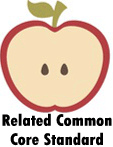Beginning Sounds Worksheets

When it comes to language there is often a great deal of confusion as to how letters, the alphabet, and sounds interrelate and are differentiated from one another. I feel the most important thing that we must understand is that just because students are proficient in one, it does not reflect they understand the other. Each of the skills are completely independent of one another. I would look at it like this, letters are the fundamental units of language. They are symbols or characters; in English we have twenty-six different letters. The alphabet is the next step up. This is the arrangement of the letters as a group and sequence into consonants and vowels. Sounds are the final leg of this because they relate to both latter units. Each individual letter has a predictable and reliable sound associated with it. When we look at a group of letters, it becomes less predictable, but it still follows a trend. Most of the time when we are teaching this skill students are just learning the concept of individuals versus groups, so this can be a challenging concept for youngsters. This series of worksheets will focus on the sounds that are found at the front of word. Most will be a mixture of consonants and vowels.
Beginning Sounds Worksheets To Print:
Picture Words - Look at the pictures and fill in the missing letter to complete each word.
Animal Sounds - Say the name of each picture. Write the first letter on the line.
Match Me - Draw a line matching each picture with the letter that makes its beginning sound.
That Darn Letter D - Trace the letter d. Practice writing the letter d on the line. Then circle each picture that begins with the d sound.
Front Sounds - Match the letter to the sound of each picture.
Lots to Do - Say the name of each picture. Which letter will complete the word? Draw a line connecting the letter to the name of each picture. Then write the letter in the blank.
The "O" Sound - Look at the pictures. Fill in the missing letter to complete each word.
Pop It In - Say the name of each picture. Fill in the letter you hear at the start of the word.
The /w/ Sound - Circle each picture that has the /w/ sound at the front.
The H Race - We go through a series of work getting comfortable with this letter.
Picture It - What letter starts this all off, use the picture to get it going.
One of Three - Which of the three letters starts the name of the picture.
How to Teach Students Beginning Sounds
The first thing that we need to understand and fully acknowledge is that all children learn differently. While I am not going to drift off into talking about multiple intelligences, we will just accept that paradigm and move on to exploring how to service all these different learners. This means that when it comes to teaching sounds, you need to have a noticeably big bag of tricks to rely on. I would say that you need to have near a dozen different techniques to pull this off over the course of your career. It is often said that you learn what you teach over the first five years of your career and until retirement to learn how to teach it. I would focus on trying two new techniques ever time you approach this unit. Things that work, go in the bag of tricks. Things that do not resonate with students will be let go by the waist side. Often school districts will have different programs that add to your bag of tricks and that is great. Just realize that we all have different teaching styles, things that we are strong with and those that we are not.
The foundation of your program should always be a set routine that centers on constant and continual repetition. I would start this routine by assigning a set of groups that focus on structure. Set aside a fixed amount of time to have student practice independently or in small groups each and every day. It can be anywhere from ten to fifteen minutes. I would also make sure that I have as many different tools as possible for students to use. This can be in the form of poster cards, flashcards, flipbooks, posters, and file folders. You can also incorporate technology in the form of apps or edu-games that repeat this process. I find that anything that can be down with their hands, sinks in better than expected. You can have students make letters with clay and put these sounds together. A fun approach is to have students form the beginning sounds with clay or plastic letters and then have them build words off of that word starter.
